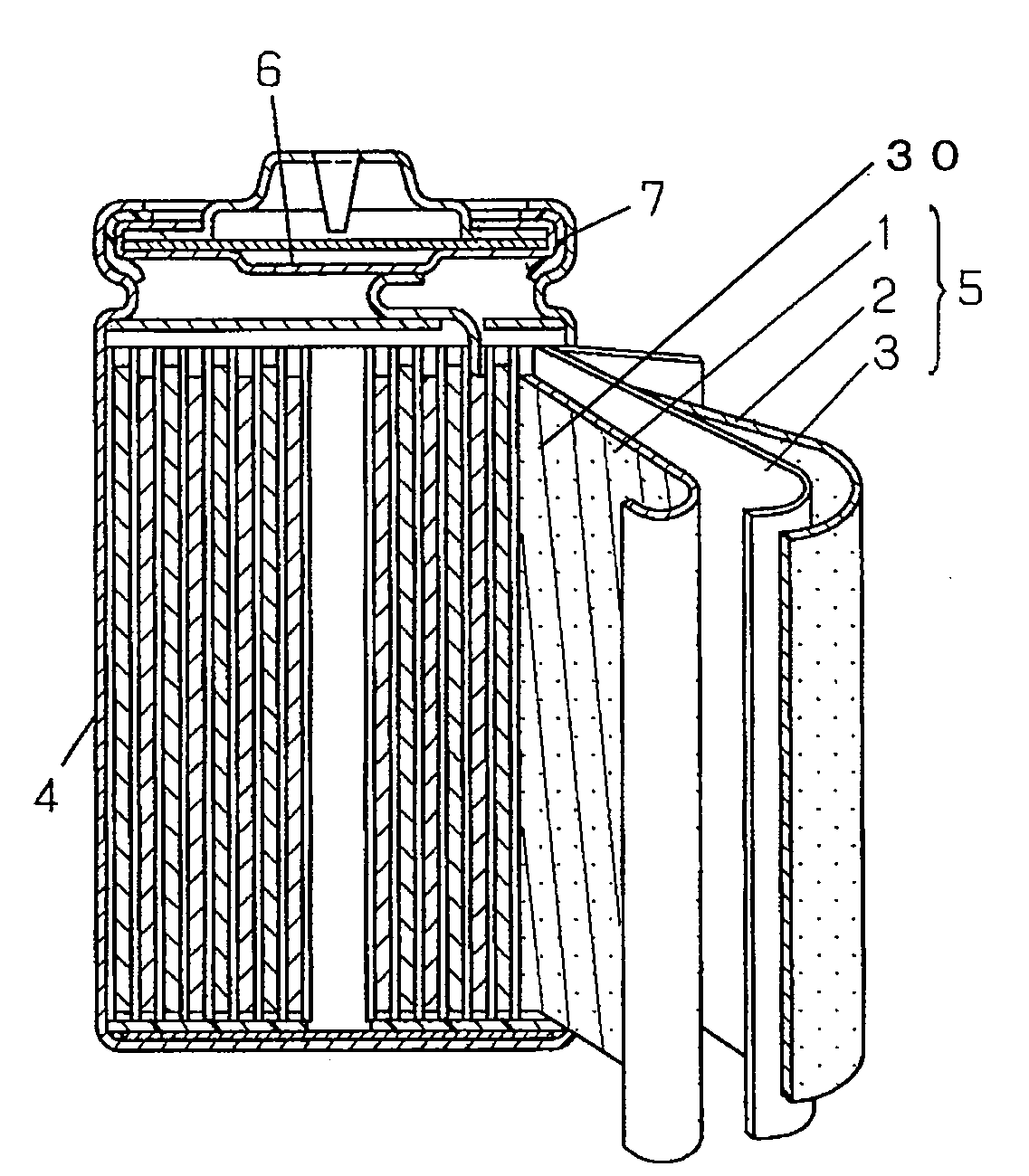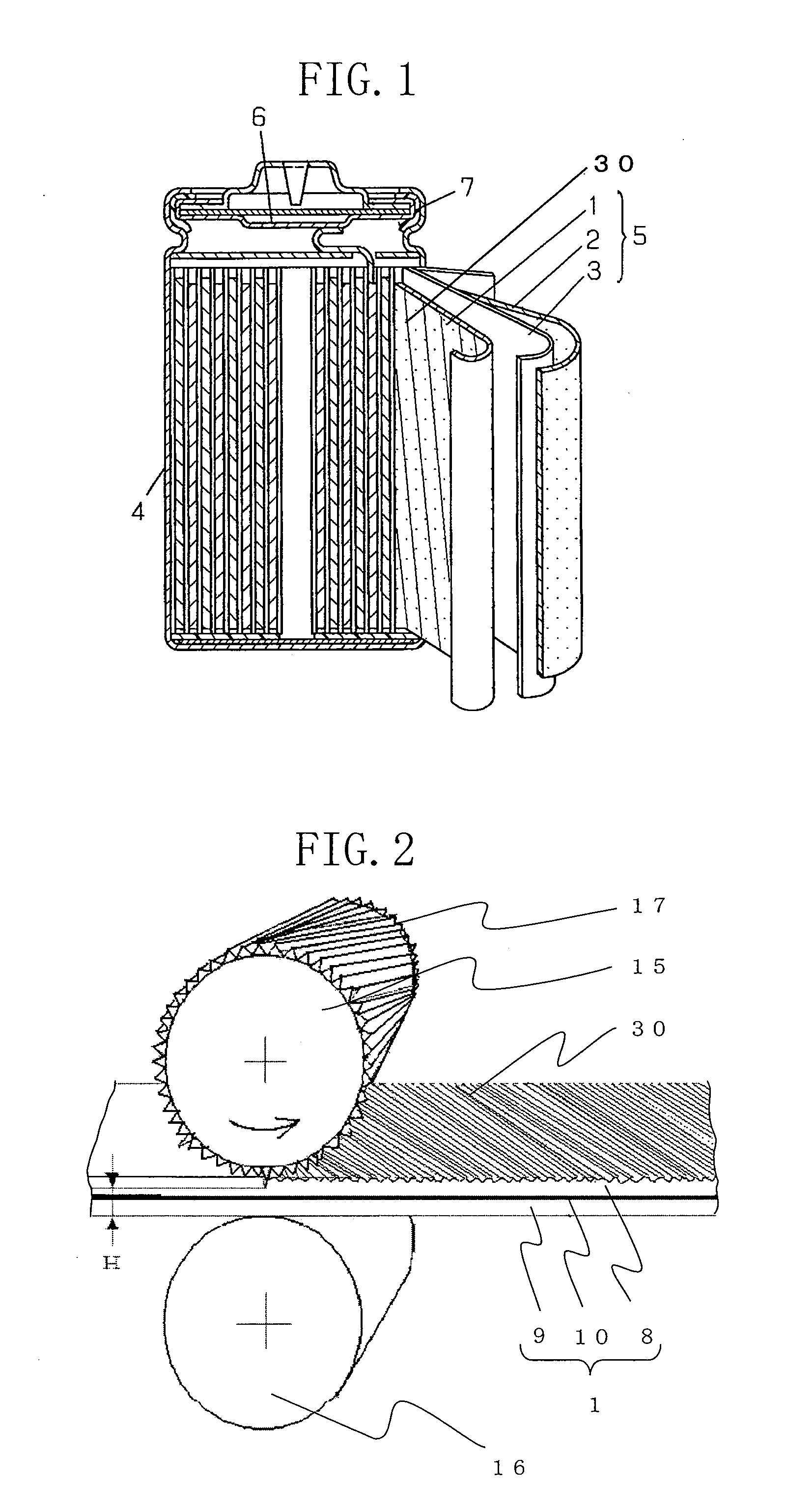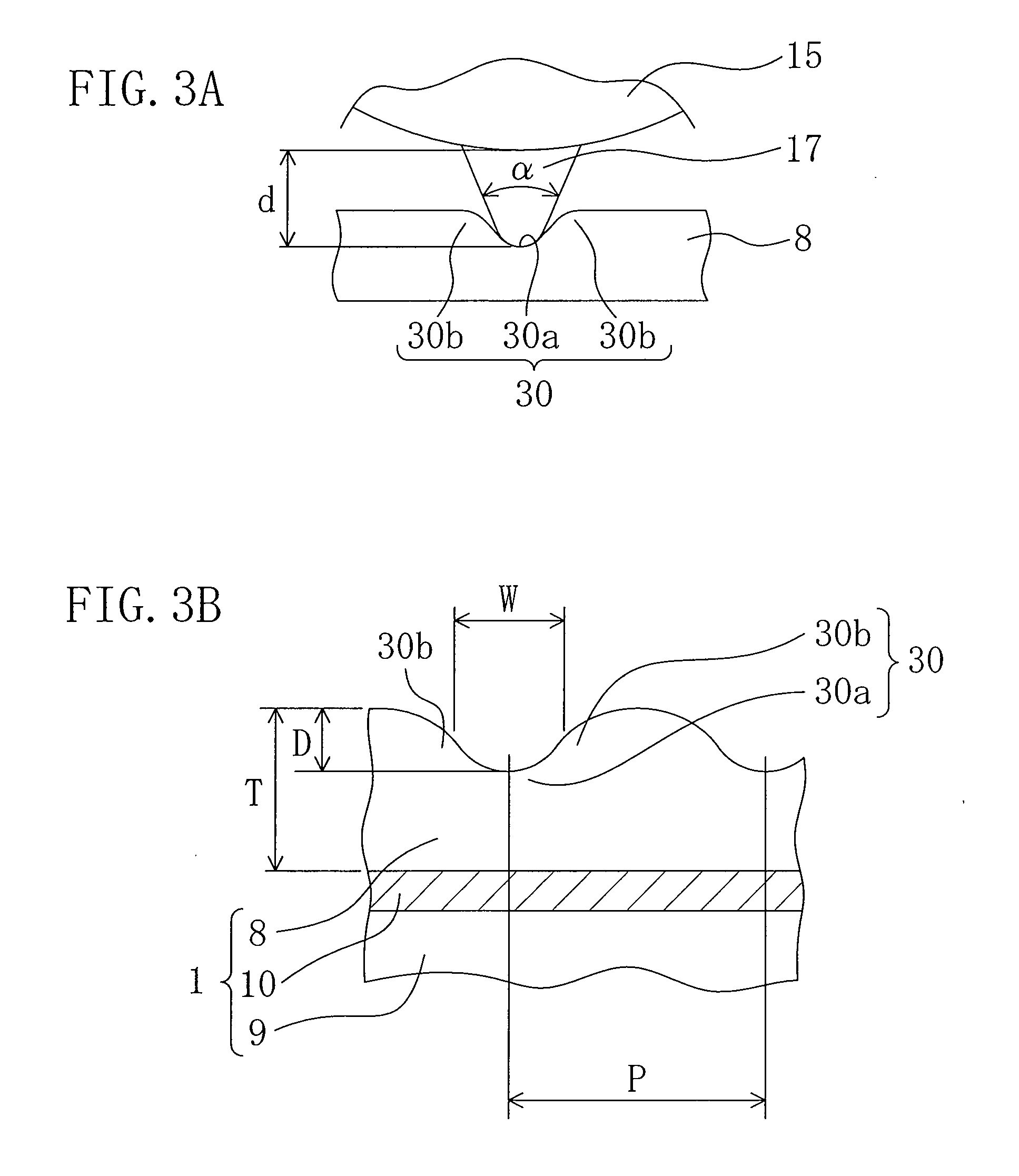Secondary cell and its manufacturing method
a manufacturing method and technology for secondary batteries, applied in the direction of cell components, sustainable manufacturing/processing, wound/folded electrode electrodes, etc., can solve the problems of reducing charge/discharge capacity, affecting the cycle life of the battery, so as to reduce the cycle life, prevent the peeling of active materials, and suppress the occurrence of internal short circuits
- Summary
- Abstract
- Description
- Claims
- Application Information
AI Technical Summary
Benefits of technology
Problems solved by technology
Method used
Image
Examples
example
[0094]Hereinafter, evaluation results on cycle characteristics and impregnating ability, for example, of the lithium ion secondary battery of the present invention will be described based on examples. The present invention is not limited to the following examples. (Example 1)
[0095]First, 100 parts by weight of lithium cobaltate as an active material, 2 parts by weight of acetylene black as a conductive agent with respect to 100 parts by weight of the active material, and 2 parts by weight of polyvinylidene fluoride as a binder with respect to 100 parts by weight of the active material were stirred and kneaded with an appropriate amount of n-methyl-2-pyrrolidone, thereby producing a positive electrode material mixture paste. This positive electrode material mixture paste was applied onto a current collector made of aluminium foil with a thickness of 15 μm, was dried, and then was pressed to have a total thickness of 170 μm.
[0096]Next, as illustrated in FIG. 3(a), an upper roller 15 o...
example 2
[0101]An electrode group was produced in the same manner as in Example 1 except that a lower roller 16 was equivalent to the upper roller 15 used in Example 1 so that trenches 30 were formed in both faces of a positive electrode plate 1. As illustrated in FIG. 6(a), the trenches 30 formed on the both faces of the positive electrode plate 1 are positioned at an angle of 45° with respect to the longitudinal direction of the positive electrode plate 1 and the phases of the trenches in the respective both faces of the positive electrode plate 1 are symmetric.
PUM
| Property | Measurement | Unit |
|---|---|---|
| depth | aaaaa | aaaaa |
| depth | aaaaa | aaaaa |
| inclination angle | aaaaa | aaaaa |
Abstract
Description
Claims
Application Information
 Login to View More
Login to View More - R&D
- Intellectual Property
- Life Sciences
- Materials
- Tech Scout
- Unparalleled Data Quality
- Higher Quality Content
- 60% Fewer Hallucinations
Browse by: Latest US Patents, China's latest patents, Technical Efficacy Thesaurus, Application Domain, Technology Topic, Popular Technical Reports.
© 2025 PatSnap. All rights reserved.Legal|Privacy policy|Modern Slavery Act Transparency Statement|Sitemap|About US| Contact US: help@patsnap.com



